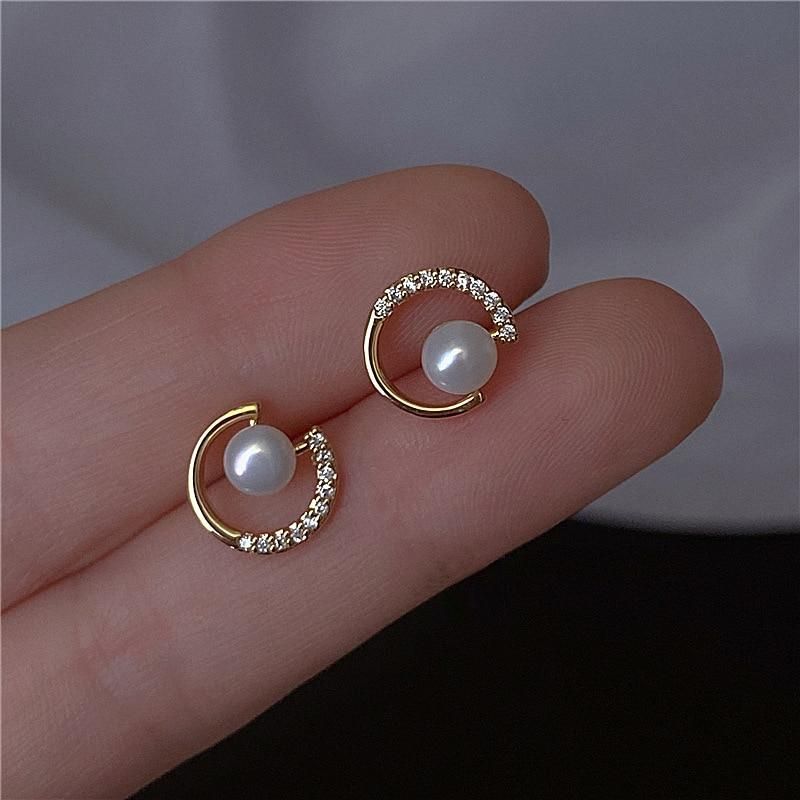American Indian handmade jewelry holds a significant place in the realm of art and culture. With its rich tradition and exquisite craftsmanship, it reflects the heritage of Native American tribes across the United States. In this introductory section, we delve into the historical significance and cultural importance of American Indian handmade jewelry, as well as introduce the diverse tribes and regions known for producing these remarkable pieces.
For centuries, American Indian tribes have been crafting unique and intricate jewelry that serves as both adornment and reflection of their cultures. Each piece tells a story, showcasing the proud traditions and symbolic meanings embedded within Native American heritage. From necklaces to bracelets, earrings to rings, Native artisans have mastered various techniques to create extraordinary works of wearable art.
What sets American Indian handmade jewelry apart is not only the meticulous artistry but also the use of traditional materials like turquoise, silver, and natural gemstones. These materials hold deep symbolism within Native cultures and are carefully chosen to convey specific messages through their designs. As we explore the world of American Indian handmade jewelry in this article, we will uncover the beauty behind these unique techniques and materials used by Native artisans.
Alongside its artistic value, American Indian handmade jewelry also holds great historical significance. The origins of Native American jewelry making can be traced back to ancient times when tribes crafted ornaments from items found in their natural surroundings. Over time, influences from various groups shaped its development into a distinctive art form celebrated globally today. We will unravel this history by examining milestones and fusions of traditional styles with contemporary adaptations.
Appreciating the Artistry
American Indian handmade jewelry is renowned not only for its stunning beauty but also for the unique techniques and materials used in its creation. Native artisans employ intricate crafting techniques that have been passed down through generations, creating exquisite pieces that are truly one-of-a-kind.
Additionally, traditional materials like turquoise, silver, and natural gemstones play a vital role in defining the authenticity and beauty of Native American jewelry. Understanding these techniques and materials is essential to fully appreciate the artistry behind these remarkable pieces.
The crafting techniques used by Native artisans are a testament to their skill and dedication to their craft. They incorporate intricate weaving, beading, and metalworking methods to create delicate patterns and designs that are both visually captivating and structurally durable.
One popular technique employed by many tribes is overlaying silver on a base piece, resulting in a multi-dimensional effect that adds depth to the design. Other techniques such as filigree work, stone-setting, and stamping are also prevalent in Native American jewelry-making.
One of the defining features of American Indian handmade jewelry is its use of traditional materials. Turquoise holds great significance in many Native American cultures due to its natural beauty and spiritual associations. It is believed to possess healing properties and bring good fortune to its wearer.
Silver has long been a favored material for Native artisans due to its malleability and durability when combined with other metals. Natural gemstones such as coral, lapis lazuli, and spiny oyster shell are often incorporated into designs as well, adding vibrant pops of color. Each material used holds deep symbolic meaning within tribal cultures, making them more than just mere adornments.
In addition to the unique techniques and materials used, American Indian handmade jewelry is often adorned with designs and motifs that carry profound cultural symbolism. For example, the Thunderbird symbolizes power and protection across several tribes’ traditions while feathers are associated with spirituality and freedom.
The use of specific geometric patterns or animal forms may vary between tribes, each carrying its own cultural significance and historical narrative. These symbols connect wearers to their heritage and serve as a visual representation of their tribal identity.
Through their choice of techniques, materials, and symbolic elements, Native artisans create truly remarkable pieces of art that showcase the richness of American Indian culture and history. The artistry behind these handmade jewelry pieces serves not only as an aesthetic expression but also as a vehicle for storytelling and preserving cultural traditions. Appreciating the intricacies of these techniques and materials is crucial in understanding the profound significance and beauty encapsulated within Native American jewelry.
Unraveling the History
Native American handmade jewelry holds a rich history that dates back to ancient times. The artistry and craftsmanship of Native American tribes have been passed down through generations, resulting in stunningly beautiful pieces that embody both cultural significance and timeless beauty.
The origins of Native American jewelry making can be traced to prehistoric times when various tribes began adorning themselves with natural materials such as shells, beads, bones, and stones. These early forms of jewelry primarily served spiritual and ceremonial purposes, playing a crucial role in tribal rituals and traditions. As time went on, the introduction of metalworking techniques brought about new possibilities for intricate designs and embellishments.
Throughout history, Native American jewelry making has been shaped by significant influences and milestones. The arrival of European traders brought new materials like silver into Native communities, fueling a shift in traditional jewelry-making practices. This fusion of traditional tribal styles with European techniques gave rise to unique designs that still resonate today.
In recent years, contemporary Native American artisans have continued to honor their ancestral traditions while pushing the boundaries of their craft. Through experimentation with modern technologies and innovative design ideas, they have produced mesmerizing pieces that bridge the gap between past and present. By melding tradition with innovation, these artists are ensuring the continued evolution of Native American handmade jewelry for future generations to enjoy.
The history of American Indian handmade jewelry is a testament to the deep cultural roots maintained by indigenous tribes throughout North America. From ancient shell beads to contemporary silver masterpieces, each piece tells a story – a story that speaks not only of the individual artist who created it but also of their tribe’s heritage and enduring traditions. Unraveling this history allows us to gain a greater appreciation for the artistry behind every piece we encounter today.
As we dive deeper into the world of Native American handcrafted jewelry, let us explore the distinct tribal styles that have emerged over time. From the iconic silver and turquoise Navajo designs to the intricate overlay work of the Hopi artisans, each tribe has developed its own unique aesthetic. By delving into the diverse traditions and styles of American Indian tribes, we can truly appreciate the depth of artistry within this extraordinary craft.
Traditional Tribal Jewelry
Native American tribes have a rich and diverse history of crafting exquisite handmade jewelry. Each tribe possesses its own unique style and techniques that are deeply rooted in their cultural traditions. This section will delve into the distinct tribal styles, such as Navajo, Hopi, Zuni, and Apache, showcasing characteristic elements and themes that are central to each tribe’s jewelry.
– Navajo: The Navajo tribe is renowned for their skillful silversmithing techniques and use of turquoise in their jewelry. Their pieces often feature intricate silverwork with bold designs inspired by nature and sacred symbols. Traditional adornments like squash blossom necklaces, concho belts, and cuff bracelets are iconic to Navajo jewelry.
– Hopi: The Hopi people are known for their fascinating overlay technique, which involves soldering two layers of silver together to create contrasting designs. Their jewelry often incorporates symbolic motifs representing fertility, water, corn, or migration paths. Kachina dolls and butterfly designs are common themes found in Hopi jewelry.
– Zuni: Zuni artisans have gained recognition for their intricate stone inlay work known as “petit point” or “needlepoint.” They meticulously cut small pieces of coral, shell, turquoise, or other gemstones into precise shapes to create stunning mosaic patterns. Zuni jewelry frequently features animal motifs such as bears, eagles, or snakes symbolizing spiritual significance.
– Apache: Apache jewelry showcases a distinct blend of tradition and innovation. Famous for their use of seed beads and quillwork, Apache artisans create intricate beaded necklaces, earrings, and cuffs adorned with significant symbols like thunderbirds or arrows. Today’s Apache artists also experiment with contemporary materials while maintaining respect for their cultural heritage.
By exploring these traditional tribal styles within American Indian handmade jewelry, we gain insight into the cultural diversity present among Native American artisans. Each tribe’s distinctive techniques, materials, and symbolic motifs reflect their unique heritage and ancestral connections. These extraordinary pieces not only serve as personal adornments but also convey powerful stories and cultural narratives.
Bridging Past and Present
Embracing Contemporary Techniques and Designs
In recent years, Native American artists have been incorporating modern techniques and designs into their handmade jewelry, creating exquisite pieces that fuse tradition with innovation. By embracing contemporary styles, these artists are able to reach a wider audience while still staying true to their cultural heritage.
One example of this is the use of mixed media in Native American jewelry, where traditional materials like turquoise and silver are combined with unconventional elements such as wood, ceramics, or even recycled materials. This blending of different materials allows the artists to experiment with new textures and colors while adding a unique touch to their creations.
Another notable trend in modern Native American jewelry is the incorporation of non-traditional motifs and symbols. While traditional designs hold great cultural significance, contemporary Native artists also draw inspiration from their personal experiences and interests.
For instance, some may incorporate abstract patterns or nature-inspired motifs into their designs as a way to express their individuality and connect with a broader audience. Additionally, the use of innovative techniques like laser cutting and 3D printing has allowed for more intricate and detailed designs that were not traditionally achievable by hand.
Sustainable Practices in Native American Jewelry
In response to growing environmental concerns, many Native American artisans have embraced sustainable practices in their craft. They prioritize ethically sourced materials and strive for eco-friendly production methods. Some artists work exclusively with recycled metals, minimizing waste produced during the jewelry-making process. Others focus on using natural gemstones sourced from responsible mines or even create pieces using reclaimed materials found in their communities.
Furthermore, there has been an increased emphasis on supporting fair trade practices in the Native American jewelry market. By establishing direct relationships with tribal artisans and purchasing directly from them or reputable galleries that collaborate closely with native communities, consumers can ensure they are supporting ethical sourcing and fair compensation for the artists.
Notable Contemporary Jewelry Artists
The modern era of American Indian handmade jewelry is marked by the emergence of talented and innovative artists from various tribes. One such artist is Denise Wallace, a Chugach Alutiiq metalsmith known for her exceptional silver and gold creations. Her designs often blend traditional Alaska Native motifs with contemporary elements, resulting in stunning pieces that transcend cultural boundaries.
Another notable contemporary jewelry artist is Jesse Monongya, a renowned Navajo jeweler known for his intricate inlay work. Monongya incorporates diverse materials into his designs, from precious gems to unconventional substances like dinosaur bone or meteorite. His groundbreaking techniques and commitment to preserving traditional Navajo craftsmanship have earned him numerous accolades and made him a prominent figure in the Native American arts community.
These are just a few examples of the many talented Native American jewelry artists who are bridging the gap between past and present, enriching the tradition of American Indian handmade jewelry with their creativity and innovation. By honoring their heritage while embracing new techniques and materials, these artists ensure that this cherished art form continues to evolve and captivate audiences around the world.
Authenticity and Ethical Sourcing
Distinguishing Genuine Native American Handmade Jewelry
When purchasing American Indian handmade jewelry, it is important to ensure its authenticity and support tribal artisans. With the rise of mass-produced imitations flooding the market, it can be challenging to distinguish genuine pieces from fakes. Here are some tips to help you navigate the world of authentic Native American jewelry:
- Hallmarks and Signatures: Look for hallmarks or signatures on the jewelry that indicate the artist’s name or tribal affiliation. These markings provide credibility and guarantee that the piece was made by a Native artisan.
- Materials Used: Familiarize yourself with the traditional materials used in Native American jewelry, such as turquoise, silver, coral, and other natural gemstones. Assess the quality and craftsmanship of these materials, as genuine pieces often have distinct characteristics that set them apart from imitations.
- Craftsmanship: Pay attention to the craftsmanship of the piece. Authentic Native American jewelry is meticulously handcrafted with attention to detail. Look for evidence of skillful techniques, such as intricate stampwork, overlay designs, and intricate stone settings.
- Provenance: Authentic Native American handmade jewelry often comes with a certificate of authenticity or provenance from reputable sources or tribal organizations. These certificates verify that the piece was created by a Native artisan using traditional methods.
Supporting Tribal Artisans
To ensure your purchase supports tribal artisans directly and promotes ethical sourcing practices, consider the following:
- Buy From Reputable Sources: Purchase from reputable sources such as tribal-owned stores, galleries specializing in Native American art, or artists themselves at recognized events and exhibitions. These sources are more likely to sell authentic pieces while supporting indigenous communities.
- Research Before You Buy: Take the time to research both the seller and the artist before making your purchase. Look for information about their background, affiliation with tribal communities, and any awards or recognition they may have received. This will give you confidence in your purchase and support those who have a deep connection to their craft.
- Fair Trade Practices: Choose jewelry that is produced using fair trade practices, ensuring that artisans are paid equitably for their work. Look for certifications or labels that indicate the piece is ethically sourced and supports sustainable, community-based initiatives.
- Directly Support Native Artists: Whenever possible, consider purchasing directly from Native artists themselves. This allows you to engage with them personally, hear their stories, and contribute directly to their livelihoods. Native art markets, festivals, and events provide wonderful opportunities to connect with artists and support their work.
By being mindful of these measures, you can confidently engage with the rich tradition of American Indian handmade jewelry while supporting the cultural legacy of Native tribes.
Stories of Creation
American Indian jewelry is not only a form of art, but it is also deeply rooted in the culture and traditions of Native American tribes. Throughout history, many skilled jewelry artisans have crafted exquisite pieces that hold great historical and cultural significance. In this section, we delve into the personal narratives of American Indian jewelry artists, exploring their creative process and gaining insight into their unique perspectives.
Insightful Interviews and Profiles
In our quest to learn more about American Indian handmade jewelry, we have had the privilege of interviewing and profiling renowned Native American jewelry artisans. These artists possess an intimate understanding of their craft and are dedicated to preserving the cultural legacy associated with their creations.
One such artist is Marie Yazzie from the Navajo tribe. Through our interview, Marie shared her deep connection to her ancestral heritage and how it influences her designs. She spoke passionately about infusing traditional Navajo motifs with contemporary elements to create truly one-of-a-kind pieces. Marie’s commitment to honoring her culture shines through in every meticulously crafted jewelry item she produces.
Creative Process and Cultural Legacy
Each American Indian jewelry artist has their own unique creative process that reflects not only their technical skills but also their spiritual connection to their craft. Many artists draw inspiration from ancient tribal stories, landscapes, natural elements, or even dreams. They interpret these influences through their artistic lens, resulting in jewelry that tells a story or conveys a specific emotion.
For example, Thomas Begay from the Zuni tribe shared his creative process during our interview. He described how he starts with a raw piece of turquoise or other gemstones and allows them to guide him as he carves intricate animal designs onto them.
Thomas believes that each stone has its own story waiting to be revealed through his craftsmanship. Through his work, he seeks to preserve not only the art form itself but also the stories and traditions passed down through generations.
The Stories Behind the Jewelry
One of the most fascinating aspects of American Indian handmade jewelry is the rich symbolism and meaning behind each design. Every piece carries with it a story or a representation of elements from the natural world, tribal legends, or spiritual beliefs. The personal narratives of artists give us a deeper understanding of these stories and their significance.
In our interview with Jennifer Lone Elk from the Cheyenne tribe, she shared how her jewelry designs are an homage to her ancestors’ resilience and strength in overcoming adversity. Her pieces often incorporate motifs representing the eagle, which symbolizes courage and freedom in her culture. Her work serves as a powerful reminder of the history and heritage that live on through Native American jewelry.
By exploring these personal narratives, we gain a newfound appreciation for American Indian jewelry not only as beautiful adornments but also as tangible links to tradition, culture, and spirituality. These stories offer a glimpse into the thoughts, emotions, and experiences that drive Native American artists to create remarkable pieces that continue to captivate and inspire us today.
Caring for Your Treasures
American Indian handmade jewelry is not only a beautiful and valuable art form, but it also carries deep cultural significance. To ensure that your cherished pieces last for generations to come, it is important to properly care for and maintain them. This section will provide a comprehensive guide on the best practices for maintaining and preserving American Indian handmade jewelry.
When caring for your American Indian handmade jewelry, there are several important considerations to keep in mind. First, it is crucial to handle your pieces with clean hands and avoid touching the gemstones or delicate components excessively. This helps prevent any transfer of oils or dirt that may damage the materials over time.
Storing your jewelry properly is another key aspect of preservation. It is recommended to store each piece separately in a soft cloth or jewelry pouch to prevent scratching or tangling. Additionally, keeping your jewelry away from direct sunlight, extreme temperatures, and humidity can help prevent any potential damage.
Regular cleaning of your American Indian handmade jewelry is essential for maintaining its beauty and shine. However, it is important to use gentle cleaning methods that do not harm the materials. For instance, avoiding harsh chemicals or abrasive cleaners is advised to protect delicate gemstones such as turquoise.
It is worth noting that if you are unsure how to clean or care for a specific piece of Native American jewelry, reaching out to a professional jeweler with experience in handling such pieces can be beneficial. They can provide guidance on the best practices for cleaning and maintaining your treasures.
By following these best practices for caring for your American Indian handmade jewelry, you can ensure that these unique and culturally significant pieces continue to bring joy and beauty into your life. Proper preservation techniques not only help protect their value but also contribute to preserving this heritage art form for future generations.
| Best Practices | Tips |
|---|---|
| Handle With Clean Hands | Avoid touching gemstones or delicate components excessively to prevent transfer of oils or dirt. |
| Store Properly | Keep each piece separately in a soft cloth or jewelry pouch to prevent scratching or tangling, and away from direct sunlight, extreme temperatures, and humidity. |
| Gentle Cleaning | Use gentle cleaning methods and avoid harsh chemicals or abrasive cleaners. |
| Seek Professional Help | If unsure, consult a professional jeweler experienced in handling Native American jewelry for advice on specific pieces. |
Conclusion
In conclusion, American Indian handmade jewelry embodies a rich tradition of artistry and cultural significance. Throughout history, Native artisans have employed unique techniques and materials to create exquisite pieces that reflect their tribal heritage and personal narratives. From the use of traditional materials like turquoise and silver to the incorporation of symbolic designs and motifs, each piece tells a story and carries deep meaning.
The origins of American Indian jewelry making can be traced back to ancient times, and over the centuries, it has evolved through significant influences and milestones. Today, modern Native artists are embracing contemporary techniques and designs while still honoring their traditional roots. This fusion of old and new styles ensures the continued vitality of Native American handmade jewelry in the face of changing times.
It is important for consumers to ensure that they are purchasing genuine American Indian handmade jewelry from reputable sources. By supporting tribal artisans directly, buyers can contribute to fair trade practices in the Native American jewelry market. Ethical sourcing not only helps protect the authenticity of this art form but also supports the livelihoods of those who have dedicated their lives to preserving their cultural heritage through their craft.
In conclusion, American Indian handmade jewelry represents more than just adornment; it is a reflection of deep cultural legacy and artistic expression. By appreciating and supporting this timeless art form, we honor Native American traditions while ensuring its preservation for future generations. Let us treasure these treasures with care, continuing to tell their stories and celebrate their enduring beauty.

Welcome to my jewelry blog! My name is Sarah and I am the owner of this blog.
I love making jewelry and sharing my creations with others.
So whether you’re someone who loves wearing jewelry yourself or simply enjoys learning about it, be sure to check out my blog for insightful posts on everything related to this exciting topic!





